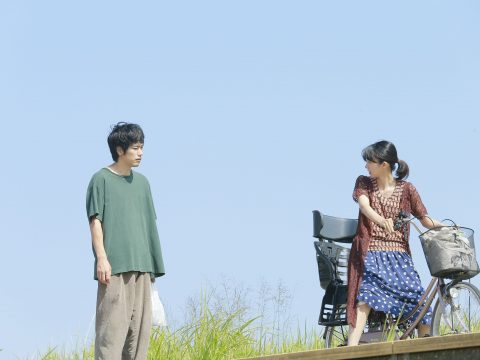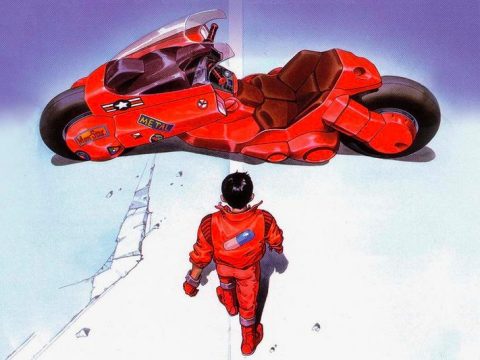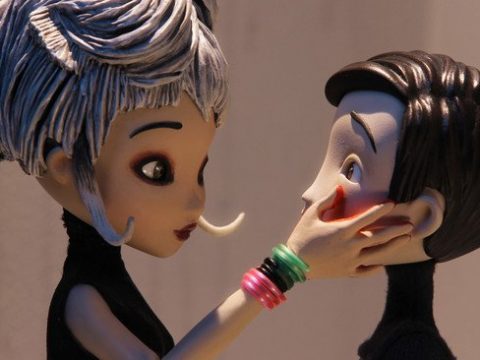
Sinking of Japan (2006) is a massive disaster and disappointment directed by Shinji Higuchi, who was once the greatest special effects director in Japan, creating the stunning FX for Shusuke Kaneko’s Gamera films. Sinking of Japan is a remake of 1973’s Submersion of Japan, itself an adaptation of Sakyo Komatsu’s novel Japan Sinks. Now Submersion of Japan is no masterpiece, its direction is pedestrian, the film itself is kind of talky and boring and the special effects work is underused. Sinking of Japan, however, makes Submersion look like an absolute master work of the genre. I confess I was really looking forward to this film. I am a huge fan of Higuchi’s special effects work and enjoyed his directorial debut, Lorelei: The Witch of the Pacific Ocean (2005), even if its politics were a bit dubious. Though there was an awful J-pop song over the trailer that should have warned me, the special effects scenes in Sinking of Japan looked absolutely stunning. In the film’s defense, Makoto Kamiya’s SFX are incredible and the film is probably the slickest, best looking live-action Japanese film ever made. Too bad it completely follows the patented Michael Bay formula of storytelling and filmmaking!
 Japan•s days are numbered. UN experts say that the country is going to sink into the ocean in just over 40 years. However, one Dr. Tadokoro (Etsushi Toyokawa), after conducting several experiments and using a computer analysis based on his findings, comes to a horrifying revelation: Japan will sink beneath the waves in less than a year! He feverishly attempts to get the Japanese government to take action, but naturally no one listens. Only after Prime Minister Yamamoto (Koji Ishizaka, who actually looks a hell of a lot like Junichiro Koizumi), on his way to China, is killed when his plane flies over a volcanic eruption, does Japan start to take action. Soon the government attempts to evacuate its citizens to other countries, but anti-Japanese sentiment breaks out all over the world. Tadokoro decides that the only way to save Japan is to detonate an explosive device under Japan’s tectonic plates. After submarine pilot Shinji Yuki (Mitsuhiro Oikawa) is unsuccessful and is killed in his attempt, fellow pilot Toshio Onodera (Tsuyoshi Kusanagi) is called in to finish the job. But is it possible?
Japan•s days are numbered. UN experts say that the country is going to sink into the ocean in just over 40 years. However, one Dr. Tadokoro (Etsushi Toyokawa), after conducting several experiments and using a computer analysis based on his findings, comes to a horrifying revelation: Japan will sink beneath the waves in less than a year! He feverishly attempts to get the Japanese government to take action, but naturally no one listens. Only after Prime Minister Yamamoto (Koji Ishizaka, who actually looks a hell of a lot like Junichiro Koizumi), on his way to China, is killed when his plane flies over a volcanic eruption, does Japan start to take action. Soon the government attempts to evacuate its citizens to other countries, but anti-Japanese sentiment breaks out all over the world. Tadokoro decides that the only way to save Japan is to detonate an explosive device under Japan’s tectonic plates. After submarine pilot Shinji Yuki (Mitsuhiro Oikawa) is unsuccessful and is killed in his attempt, fellow pilot Toshio Onodera (Tsuyoshi Kusanagi) is called in to finish the job. But is it possible?
Shinji Higuchi is an interesting individual. He is one of only a handful of figures in the Japanese film industry to go back and forth between the live-action and anime worlds. In the 90s, when he wasn’t doing the stunning SFX work for the Heisei Gameras, he was doing storyboards and animation on such works as Nadia: Secret of Blue Water and Neon Genesis Evangelion. He started directing films in 2005 with Lorelei: The Witch of the Pacific Ocean, which, while featuring a highly revisionist view of Japan’s role in World War II, was still a lot of fun. Sinking of Japan, on the other hand, is a major step down. I really thought Higuchi was going to do the story justice, as the original Submersion of Japan is allegedly one of his favorite films. However, unlike Shusuke Kaneko’s Gamera trilogy and Godzilla, Mothra, King Ghidorah: Giant Monsters All Out Attack (2001), and Peter Jackson’s King Kong (2005), both of which featured love poured into every frame by directors who adored the stories they were re-imagining, Sinking of Japan, well, just plain stinks. It’s every bit as awful as such trite American Michael Bay and Roland Emmerich filth as Independence Day, Armageddon, and The Day After Tomorrow.
First off, the film is absolutely saccharine in its sense of over the top sentimentality. What made Submersion of Japan interesting was its socio-political elements. It really begged the question, “What would happen and how would the world react if Japan was to simply sink beneath the ocean?•bCrLf It had a sad, melancholy feel and had a nicely downbeat and very 70s ending. However, in Sinking of Japan, this all replaced by some of the lamest melodrama since Bay’s Armageddon. The film, instead of focusing on Tadokoro’s mad rush to get everyone to believe him, focuses on the love interest between Onodera and female paramedic Reiko Abe (played by Battle Royale’s Kou Shibasaki), which was simply a minor subplot in the original. The “love interlude•bCrLf scenes between them are every bit as hilariously bad as the ones between Hayden Christensen and Natalie Portman in George Lucas’s abysmal Star Wars prequels. There’s also a scene toward the end of the film, of Shibasaki embracing Kusanagi and then weeping in slow mo as that awful, aforementioned J-pop song plays on the soundtrack, that’s nearly as moronic as the infamous “animal crackers•bCrLf scene in Armageddon.
 The film also has a big flaw in common with the original: its special effects scenes are underused. Granted, they are incredible and they (along with Taro Kawazu’s pretty cinematography) are pretty much the film’s only positive attribute. Makoto Kamiya, who worked as Higuchi’s assistant in the 90s for the Gamera trilogy and who was special effects director for GMK, handles the special effects here. Truly, they are some of the best (if not the best) looking FX scenes in any Japanese film. The big problem with them is that, well, they are just very brief and even Teruyoshi Nakano’s FX in the original Submersion felt more satisfyingly used in the context of the movie. Another massive flaw is the absolutely moronic ending. Submersion of Japan ended with Japan almost completely sunk beneath the waves and the people of Japan now dispersed around the globe. Sinking of Japan, however, concludes with Japan actually being saved! To be honest, with someone like Higuchi at the helm and eyepopping visuals, I really wanted to like Sinking of Japan, but I just couldn’t. Higuchi’s next film, The Last Princess, which is incoming in Japan in a few weeks as of this writing, is another remake, this time of Kurosawa’s The Hidden Fortress. Whether it will be any good one can only speculate.
The film also has a big flaw in common with the original: its special effects scenes are underused. Granted, they are incredible and they (along with Taro Kawazu’s pretty cinematography) are pretty much the film’s only positive attribute. Makoto Kamiya, who worked as Higuchi’s assistant in the 90s for the Gamera trilogy and who was special effects director for GMK, handles the special effects here. Truly, they are some of the best (if not the best) looking FX scenes in any Japanese film. The big problem with them is that, well, they are just very brief and even Teruyoshi Nakano’s FX in the original Submersion felt more satisfyingly used in the context of the movie. Another massive flaw is the absolutely moronic ending. Submersion of Japan ended with Japan almost completely sunk beneath the waves and the people of Japan now dispersed around the globe. Sinking of Japan, however, concludes with Japan actually being saved! To be honest, with someone like Higuchi at the helm and eyepopping visuals, I really wanted to like Sinking of Japan, but I just couldn’t. Higuchi’s next film, The Last Princess, which is incoming in Japan in a few weeks as of this writing, is another remake, this time of Kurosawa’s The Hidden Fortress. Whether it will be any good one can only speculate.







